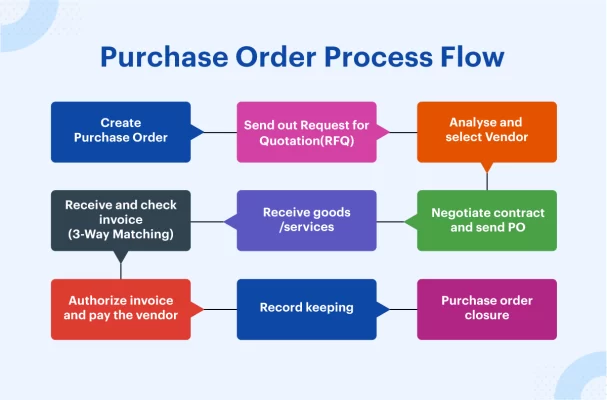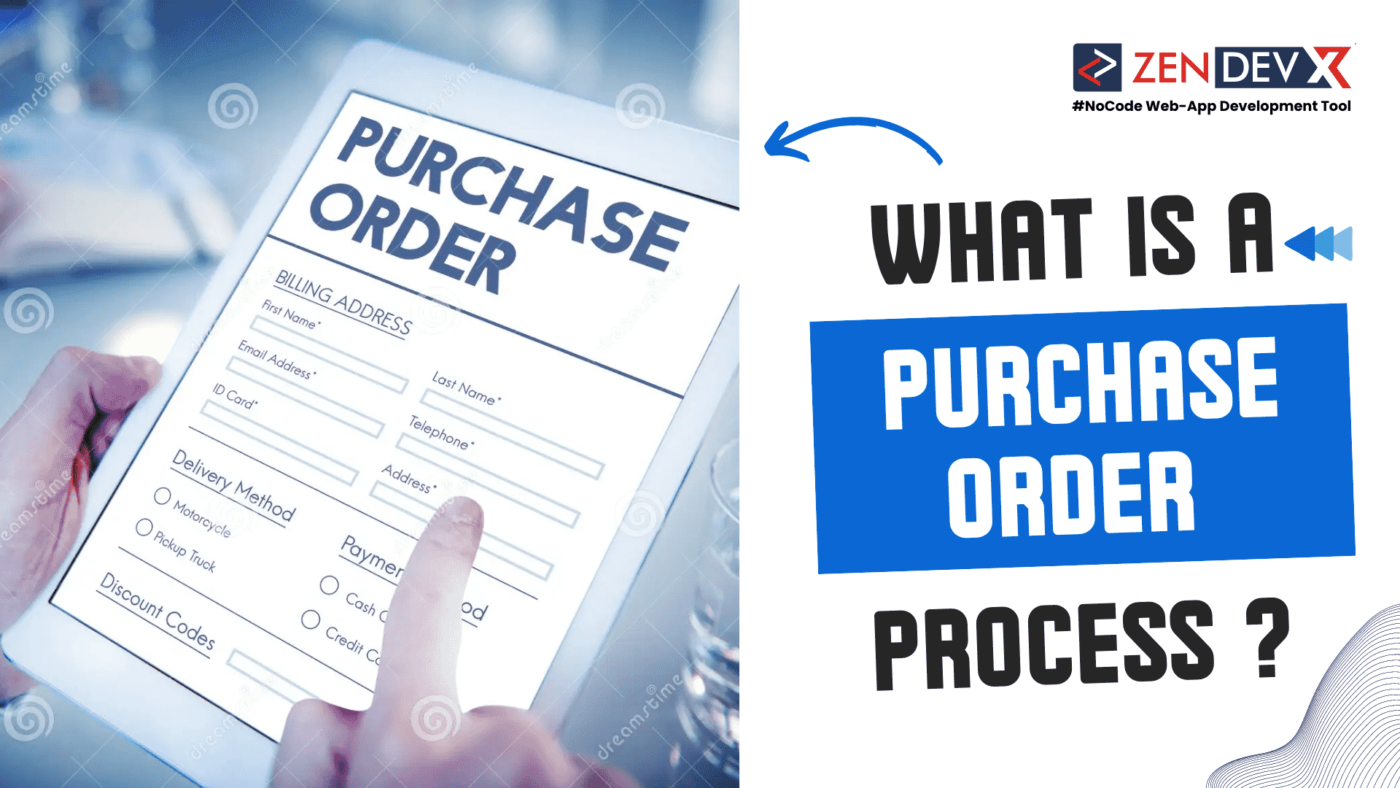Using a cloud-based system for purchase orders would be smart in the technological age. Since it would enable you to follow POs end-to-end. Let us first examine the present situation of purchase order administration and identify its main shortcomings before we explore further a procurement system for successful PO management.
Flow of Purchase Order :
Several compliance checks and approval/input chores comprise the purchase order procedure, therefore guaranteeing timely PO processing. The most often used purchase order procedure consists of these steps:
- Create a Purchase Order
- Ask Several RFQ (Requests for Quotes)
- Investigate and Choose a Seller
- Bargain on a Contract and Forward PO
- Get Goods and Services
- Get and Review the 3-Way Matching Invoice
- Authorize an Invoice and Pay the Seller
- Notes Keeping
- Close Purchase Orders
Think of this real-life example to grasp a PO procedure. Looking for new laptops to onboard new joiners, Jeni is the HR Manager. She generates a PR that auto flips and turns into a PO. The purchase order contains details on the characteristics, laptop count, and time she requires them. The PO drives a Request for Quote (RFQ) to the vendors to obtain the quotes. The prices obtained, their quality, and projected delivery time help a vendor to be chosen. After vendor selection, he/she is contracted and the PO is distributed. The seller delivers the laptops asked; Jeni picks them up and checks the items. After that, Sathish, the Finance team’s accounts manager, uses a procurement system to execute 3-way matching and pays the vendor should there be no disparities. The PO will now be noted as closed; the transaction data are kept safe.

Manual Purchase Order Systems’ Pain Points
Maintaining manual purchase orders takes time, money, and effort; they are also ineffective. Processing a single purchase order calls for much too many papers.
It is quite labor-intensive acquiring, storing, and forwarding them through the approval loop making sure they do not get lost or damaged en route.
Manual PO processing can cost companies as much as $506.52 each purchase order, claims a new APQC research. Automating your purchase process is a terrific method to cut this expense.
A manual purchase order system has several drawbacks here:
- Lacks sight
- Spikes organizational costs
- Drags PO processing cycle
- Relies on human action
- Has compliance problems and workflow bottlenecks
- Entails a never-ending email and people loop
- Is error-prone, slow, and inaccurate
Advantages of a Digital PO System
Every company should have a procurement solution with a purchase order management system for these six reasons. Digital purchase order systems have:
- Improve PO management’s efficiency; there is no lost or delayed POs.
- Speed up PO processing.
- Quickly approve purchase orders.
- Simplify stock control and order-making.
- Strengthen the link between vendor-buyers; stop procurement fraud.
Conclusion :
Bid farewell to the never-ending paper trail, lost POs, and countless hours of data entering. A cloud-based procurement tool converts bundles of documentation into easily tracked digital forms kept safely in the cloud.
Although putting a procurement solution into use seems like a band-aid fix for all your PO-related problems, the procedure itself is very involved. Having some purchase order best practices will help to guarantee that your procurement tool is operating as it should.
Your dysfunctional PO system can be fixed, efficiency will increase, and more ROI will be produced using the correct procurement best practice. Although the idea of purchase orders may sound complicated, looking at some most often used best practices will permanently clear it up once and for all.


